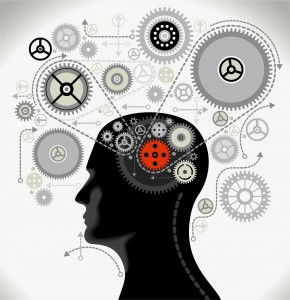Active imagination is a practice developed by Jung when he was engaged in his auseinandersetzung with the unconscious following the abrupt and brutal end of his relationship with Freud. Auseinandersetzung, as Jung meant it, can be translated as confrontation with or coming to terms with the unconscious. The products of Jung’s auseinandersetzung with the unconscious can be found in his recently published massive tome The Red Book: Liber Novus. His text and his paintings — his word and image — are rather striking and remarkable, quite creative and one-of-a-kind, well worth encountering and reflecting on in depth.
Active imagination can be likened to continuing the dream while you are awake. Active imagination can involve writing, dance, painting, sand tray and other creative media. Active imagination is active, not passive; it presupposes a supple, strong and flexible ego to withstand the dialogue with the unconscious. The idea is to deepen the relationship between consciousness and the unconscious, not to “blow away” the conscious position. Jung advised his followers to engage in a thorough analysis of the analysand’s dreams, life situation, and complexes (especially the mother and father complex) before introducing the practice of active imagination into the work of their analysands. He would wait until the end of the analysis to bring active imagination to bear, as a technique to help the analysand get free of his or her dependency on the analyst. My clinical and analytical experience supports Jung’s guidelines about using this procedure.
In my own personal experience, I waited until the end of my analysis with David L. Hart before beginning my active imagination. We had worked long and hard on my own first-half of life issues, strengthening my ego complex through a very careful analysis of my anamnesis as well as my dreams, my complexes and my current life situation. A few sessions before ending my work with David and going forth to Zurich for my analytic training at the Jung Institute, I remember beginning what would turn out to be a very long, years long, active imagination in his office, using his sand tray. (To be more accurate, it was a very large and inviting sand box on the floor of his office.) It was easy for me to go with the flow of the active imagination even though it was quite different and dramatic given what had come before, because I felt safe and contained in the temenos of his office. I could relax enough to let the active imagination unfold without forcing it. I continue to do active imagination almost every day, shortly after I awaken. My dream work is folded into my continuing active imagination.
For further information about active imagination, I would recommend wholeheartedly Barbara Hannah’s book: Encounters with the Soul. Barbara Hannah was a Jungian analyst who lived in Zurich and worked directly with Jung for many years. There are other more recent books and chapters, many of them quite good, but this is the one I find to be truest to Jung’s original vision.

